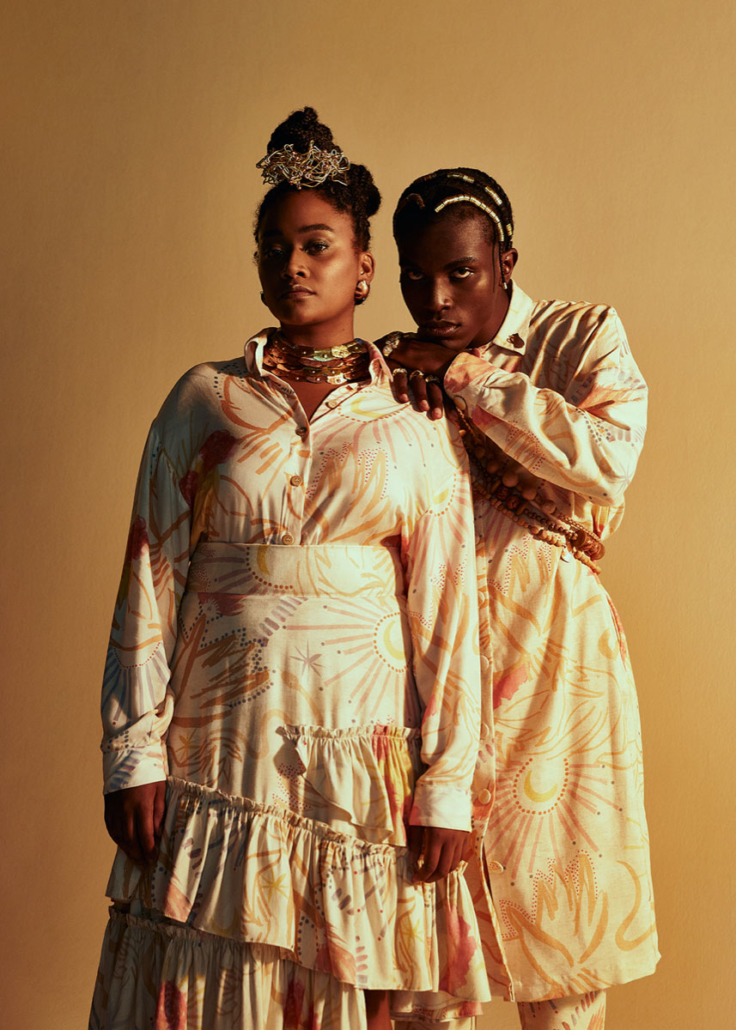“The unique designs, the plurality and the varied cultures mean the creations are unique. Discover the best of the country’s trends and innovations.”
Apex-Brasil (Brazilian Trade and Investment Promotion Agency), ABEST (Brazilian Association of Fashion Designers), Abit (Brazilian Textile and Apparel Industry Association), and Abicalçados (Brazilian footwear Industries Association) promoted Brasil Fashion Now to position Brazilian fashion brands in the international market.
“BFN is a democratic project, an excellent opportunity for brands. For those who have never had any experience with the international market, it offers an enormous learning experience about what it means to take the step towards internationalization, from several important perspectives – such as, for example, seasonality, brand building, collection, price composition, and vocabulary. Even the participation in physical events does not provide this kind of understanding. For brands that already have some type of distribution, the project is an opportunity to be in a channel that serves all the needs for continuity and expansion of your business in a consistent way, cutting steps along the way, reducing costs, and improving processes. With the continuity of the project, now in its third edition, we can see the realization of these relationships that have been cultivated, boosting Brazilian brands around the world”, Manoela Amaro, CEO and Co-Founder of BLANC.
Originality, Plurality, Varied Cultures
Brasil Fashion Now explores all of the originality, trends, and innovation of Brazilian fashion through the international B2B BLANC Fashion platform. Also, the second edition of the event (BFN2), from March to September 2021, presented Brazilian brands: Akra Collection, Andrea Bogosian, Andreza Chagas, Augusta, Catarina Mina, Haight, Inti Brand, Lily Franco, Maneca, Meerk, Osklen, Roberta Mattos, Room, Sy&Vie, Wee (Fashion Label Brasil); TIG and Belier Belier.
BLANC Platform
“BLANC is a powerful sales tool used by prominent brands around the world. It supports online businesses by helping them expand their sales to global markets, offering a wholesale management solution. BLANC proposes an innovative way to shape companies for digital wholesale.”
The platforms offers an intuitive interface to support strategic decisions and is a way to showcase creativity in a structured and professional manner to retailers around the world.
Digital Promotion and Exhibition for the International Market
Brazilian brands promoted results in the total amount of USD 94,669.00 and USD 444,000.00 for future expectations.
“The project focuses on the digital dissemination of Brazilian brands in the international market, in addition to strengthening their performance and sales through a customized commercial reach.”
About ABEST
The Brazilian Association of Fashion Designers, created in 2003, aims to strengthen and promote Brazilian design and fashion. Its main purpose is to help the development of Brazilian brands with international reach and guarantee their authenticity and creativity, in addition to promoting the Brazilian lifestyle, thus contributing to the growth of all segments linked to fashion. Currently, ABEST, which is a non-profit, has 120 brands from all over Brazil that export products to 57 different countries. Also, it constantly carries out strategic actions to expand its penetration in new markets around the world and strengthen relations with those that are already established.
About Fashion Label Brasil
Fashion Label Brasil, a Fashion Internationalization Program of Added Value, was created in 2003 by ABEST in partnership with Apex-Brasil, whose proposal is to position the image of Brazilian fashion abroad, enhancing the image of an innovative and contemporary Brazil. The program has strategic activities – Buyer and Image Project, International Fairs and Fashion Shows, Showroom Project, in addition to special activations – to expand penetration in new markets and strengthen relations with those that are already established.
About Apex-Brasil
The Brazilian Trade and Investment Promotion Agency (Apex-Brasil) works to promote Brazilian products and services abroad and attract foreign investment to strategic sectors of the Brazilian economy. To achieve these goals, Apex-Brasil carries out diversified trade promotion actions aimed at promoting exports and valuing Brazilian products and services abroad, such as commercial prospective missions, business roundtables, support for the participation of Brazilian companies in major international fairs, visits by foreign buyers and opinion setters to get to know the Brazilian productive structure, among other business platforms that also aim to strengthen the country’s brand.
#BFN2 #BFN #BrasilFashionNow #FashionLabel #FashionLabelBrasil #FLB #Apex #ApexBrasil #blanc #blancfashion





























